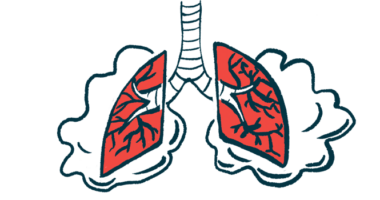Slow Growth in Childhood Can Affect Adult Height, Reasons Unclear

Poorer growth in childhood is associated with shorter height as adults in people with cystic fibrosis (CF) and does not appear to be linked with nutritional status, a recent study reported.
Results of the study, “Most Short Children with Cystic Fibrosis Do Not Catch Up by Adulthood,” were published in the journal Nutrients.
Growth in early childhood is also linked with lung function in people with CF. Early identification of growth deficits in children can allow for preventative treatments to be started sooner, improving outcomes later in life.
Nutritional interventions are known to improve weight-related predictors of lung health, such as a child’s weight-for length ratio and body mass index. But linear growth, or the change in height over time, often remains impaired despite these interventions.
Since linear growth is associated with pulmonary function and mortality in CF patients, further investigation of height changes in people with CF is warranted.
A team led by researchers at the University of Alabama and the University of Washington examined height data from the U.S. CF Foundation Patient Registry to identify whether poorer growth in childhood is a risk factor for short stature in adults.
“We hypothesized that growth restriction during early childhood in CF is associated with reduced adult height,” the researchers wrote.
“Given the importance of short stature as a prognosticator of morbidity and mortality in CF, the early identification of children at risk for stunting and appropriate interventions … could improve overall health outcomes in patients with CF,” they added.
The team retrospectively analyzed the heights of 3,655 people with CF in childhood (ages 2–4) and early adulthood (ages 18–19). At each age they calculated a height for age percentile (HFA%) — a comparison of how tall a person is compared with others their age — using growth charts from the U.S. Centers for Disease Control and Prevention.
Overall, 26% of adults with CF had an HFA% at or above the median height for their age (HFA% at least 50), and 25% had an HFA% of less than 10 (lower than the 10th percentile).
Reduced growth at ages 2–4 highly correlated with stunted height in early adulthood, the researchers found. Among people with an HFA% of less than 10 at any point during those early childhood years, more than half (54%) were also short as adults, and only 3.7% were at or above HFA% 50.
Of children between HFA% 10 to 25 at ages 2–4, only 13% were at or above HFA% 50 in early adulthood.
Children with an HFA% of at least 50 were significantly less likely to be short later in life, with only 3.2% having an HFA% of less than 10 in adulthood.
These “results demonstrate that low early childhood CF height correlates with height in adulthood,” the researchers wrote, adding that “since linear growth correlates with lung growth, identifying both risk factors and interventions for growth failure (nutritional support, confounders of clinical care, and potential endocrine involvement) could lead to improved overall health.”
The team noted, however, that even children without CF and an HFA% less than 10 could be short in adulthood. Future studies comparing children with and without CF in more detail may provide clarity on the relationship between early life growth and adult height. Further analysis of other potential contributing factors, including sex, genetic mutations, and therapies, may also be important.
While the study established a relationship between early life growth and adult height in people with CF, the mechanisms underlying poorer growth remain unclear, the researchers noted. Interventions to improve malnutrition in infants with CF helps to normalize weight gain, but they don’t seem to influence infant length, suggesting that factors other than nutritional deficiencies may be involved.
“Malnutrition can undoubtedly lead to poor growth; however … stunting in CF begins in early infancy despite nutritional interventions that generally normalized weight achievement,” they wrote.
Ongoing animal studies are helping scientists to better understand what factors contribute to stunted growth in CF, which may aid in the development of new treatments.








